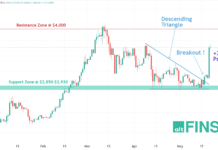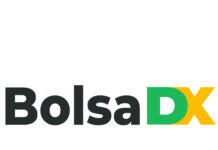By Dennis H. Lewis
Are you thinking about investing in an ICO? With all the press coverage around Bitcoin and other cryptocurrencies, it might seem like now is the perfect time to put some money into a cryptocurrency investment. But what are you actually buying when you invest in an ICO? And is this the right investment for you?
Today we’re going to explain what a cryptocurrency investment involves and how you can know if this is a type of investment which would suit you. After all, buying cryptocurrency tokens is not like investing in stock or a product. Instead, you are buying an idea in the form of a digital asset.
Before you pull the trigger on cryptocurrency investment, it’s vital that you understand what you’re purchasing and how the token economics behind the ICO work.
What can I use token economics for?
Cryptocurrency tokens are essentially a part of an abstract economy. As such, they are affected by economic forces like supply and demand, inflation, and rises and falls in worth compared to other currencies. However, even if the cryptocurrency project you are investing in is wildly successful, it still might not be clear what you can actually use your tokens for. You need to understand the utility of tokens to make you more confident in your cryptocurrency investments.
When you invest in cryptocurrency tokens, the primary question you need to ask yourself is: why will people want this token down the road? Your investment is based on the idea that the tokens you buy now will be worth more to others in the future.
Let’s talk token creation. There are a number of important variables which affect how cryptocurrency is created. Some cryptocurrencies are created in a one-time event, while others having ongoing creation methods. This changes how much tokens are worth, as they may become more or less scarce based upon how they are created.
This issue of token scarcity leads us to the key question when investing in cryptocurrency: do tokens have an intrinsic value? When you think about a traditional investment such as converting your currency into silver or gold, you can see that the metal itself has an intrinsic value due to its scarcity and its usefulness for the creation of other products (for example, gold is required for the creation of some kinds of electronics equipment).
However, consider that even this traditional investment is based on the social construction of value. The value of a silver certificate is based on the assumption that silver will be valuable to people in the future because this resource will be in demand. In essence, this is not so different from how cryptocurrency is valued.
To help give you more insight into the concept of value, let’s analyze three different cryptocurrency projects and their token economics.
Example #1: OPEN Platform
OPEN is a platform designed to help software developers integrate their existing and future apps onto the blockchain. The platform supports in-app purchases through a standard REST API, providing users with a true purchase receipt which is stored on the blockchain through an OPEN State. Instead of developing a new blockchain, OPEN runs on the Ethereum network but allows payments over almost any existing blockchain.
This means that the OPEN token is especially useful within cryptocurrency systems. For example:
- If an app developer wants to define a payment system, such as to allow for the purchase of a product, they must stake a certain amount of OPEN tokens in order to create an OPEN Scaffold. Once the payment scaffold is closed, these OPEN tokens are returned to the developer.
- Users who pay for in-app purchases using OPEN receive a discounted rate compared to users who pay using another cryptocurrency.
- These scaffolds accept all kinds of cryptocurrency. A small amount of these payments — currently 3% — are taken each day and are converted to the Open Token format on a public exchange. The resulting Open Tokens are used to further grow the platform through marketing and promotion, for example.
- These publicly converted Open Tokens are also used to refuel and maintain the developer pools of cryptocurrency, ensuring there are enough tokens for new applications.
This system accomplishes three key aims:
- There is always a demand for OPEN Tokens.
- There is always sufficient supply for app developers to use.
- The design of the system assures long-term stability of the ecosystem.
Example #2: SuchApp
SuchApp is both a messaging app and a cryptocurrency economy. The currency is based on SPS tokens which can be used for a variety of purposes:
- To purchase premium services within the app (for example, premium group names).
- E-commerce transactions within the app.
- Loyalty rewards from any group owner.
- Payment at local businesses through loyalty programs.
- Sending and receiving payments to and from friends, family, and colleagues.
In addition to these uses, there is a powerful user currency acquisition plan which is based on the viral referral program and the aggressive business development plan.
By growing its user base to millions of people, SuchApp aims to earn its status as one of the most versatile and usable cryptocurrencies on the market.
Example #3: VIVA Crown
VIVA is a human-centric blockchain economy. This system is designed to harness the excess energy which is normally lost within the financial sector, and leverage it to provide a stable recurring income for people around the world.
The system is built on three interlinked digital currencies: VIVA Coins, VIVA Crowns, and vX.
The base currency, VIVA Crowns, is designed to be the world’s most valuable cryptocurrency. In order to ensure stability, only 42,000 VIVA Crowns will ever exist. After the initial first run of 6,500 VIVA Crowns are sold, only one VIVA Crown will be created each week. This ensures that VIVA Crowns will be scarce and highly sought-after, maintaining their value.
In addition to their monetary value, VIVA Crowns also allow holders to participate more actively in the VIVA economy. Each VIVA Crown allows the user to:
- Run a mint within the VIVA economy, in order to create VIVA Coins.
- Vote alongside other VIVA Crown holders on all major decisions that affect the VIVA economy.
- Nominate anyone to receive a VIVA Award each quarter.
In this way, VIVA Crowns can maintain their monetary value while enabling owners to engage with the VIVA economy.
Conclusions
Investing in cryptocurrency tokens is not for everyone. Both investors and ICO organizations need to be careful when analyzing the value of their tokens to ensure the long-term stability and value of the cryptocurrency. The first major cryptocurrencies had very limited intrinsic value; for example, Bitcoin is only useful for transactions, and even then only in a limited capacity.
Newer cryptocurrencies have newer systems in place to add and maintain the value of tokens. But it’s still important for you to do research before investing in tokens. If the token economics you see don’t make sense, or you can’t understand them, then you probably shouldn’t invest. But if you can see a value proposition in tokens and you want to get involved in a cryptocurrency, a measured investment can be both personally rewarding and financially lucrative.

Dennis H. Lewis is a seasoned digital storyteller and ICO marketing specialist with a proven track record in both Europe and the United States. He has successfully lead to market and exited multiple startup companies, and prides himself on his ability to make complex projects easy to understand and relatable. In a marketing landscape increasingly obsessed with shiny objects and overly complicated sales funnels, Dennis still believes that the key to any successful marketing campaign are the words on the page.
















